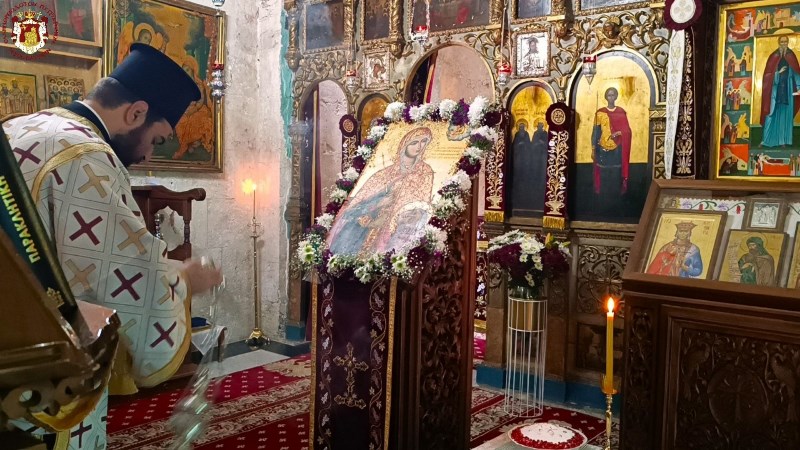Martyr Ia and 9,000 Martyrs with her, of Persia (11 September)


The Holy Martyr Ia was arrested along with 9,000 Christians by the Persian emperor Sapor II, and they were all brought to the Persian city of Bisada. The chief of the Persian sorcerers demanded that the saint renounce Christ, but she remained unyielding and so she was tortured. Then Saint Ia was thrown into prison. She was beheaded after repeated tortures.
According to Tradition, the sun was darkened at the time of her martyrdom, and the air was filled with a sweet fragrance.
Ia was denounced by idolatrous priests and suffered for the Lord in Persia during the reign of Sapor II, in 363 A.D. According to tradition, the sun became dark at the time of her death, and all the air was filled with a wondrous fragrance. She is glorified by the Lord forever.


Verses
For September 10
In the depths of the earth Ia was cut down by a sword,
And she was brought to you Savior, as a sweet-scented violet.
For September 11
The Martyr Ia sent forth a fragrance of violets,
With her outpoured blood dyed red.
Saint Ia (Violet) was an elderly Christian woman who lived in the fortress of Bet-Zabde (or Phenak) on the right bank of the Tigris at the frontier of the Roman and Persian Empires. King Shapur II of Persia (309-379), after several attempts to capture this fortress, took it in 362. He razed its walls, put to death many of the garrison and made captive about 9,000 Christians, including the holy Bishop Heliodoros as well as priests, deacons, ascetics and pious Christians (Apr. 9).
Saint Ia was among the Christian prisoners who were deported to Bet-Houzae in Persia. She was well-instructed in the faith, and love moved her to make the word of God known to the women of the place. But the husbands, suspecting that she was trying to persuade their wives to flee matrimony, denounced her. King Shapur ordered two of his magi to seize the Saint and torture her until she would worship fire and water. As Ia valiantly confessed Christ, she was stripped, her limbs were torn asunder with ropes, and she was flogged mercilessly by five tormentors. Covered in wounds, she was thrown into prison. Two months later, when she was again questioned, she said, “I shall remain steadfast in the grace that has been given to me; nothing in the world will make me give up the true God in exchange for your vain idols.” For this answer, she was beaten with forty rose-bush stems full of thorns until the shreds of her flesh covered the ground.
After keeping Saint Ia in prison for six months more, the magi, unable to overcome her resolution that was as strong as brass, tightly bound nine reeds to her body with fine cords. They pulled the reeds out one by one, tearing her flesh so deeply that her entrails appeared. Ten days after this torture, they crushed her in a press and then beheaded her, thus obtaining the crown of martyrdom at last. It is said that where her blood spilled on the ground, the earth began to swell and raise up in a supernatural manner, and the light of the sun was hidden. This, along with the beautiful fragrance that emanated from her relic, struck her executioners with awe. Her body was to be left for vultures and carrion-crows to devour, but the Christians succeeded in ransoming it and they gave her a proper burial. Later on, her holy relics were translated to Constantinople, where several churches were dedicated to Saint Ia.*
Notes:
* She is also often commemorated on August 4th with Saint Eudokia, whose Passion is so similar to that of Saint Ia that the two Saints are probably the same person. For this reason, instead of celebrating the Translation of the Relics of Saint Eudokia on August 4th, as the Synaxarion of Constantinople states, it should be the Translation of the Relics of Saint Ia. She is also probably the same Saint Ia celebrated in the Synaxarion of Constantinople on September 10.
Source: John Sanidopoulos / oca.org





